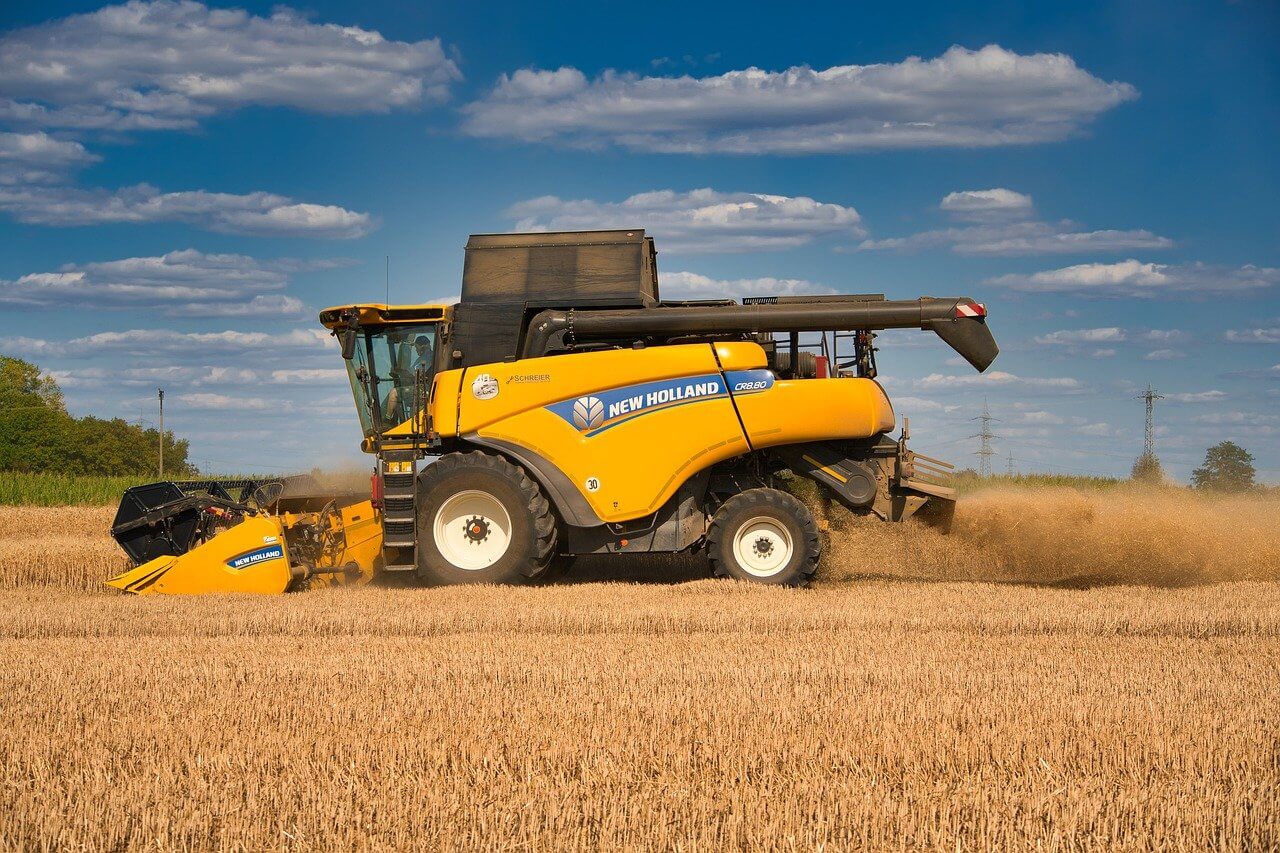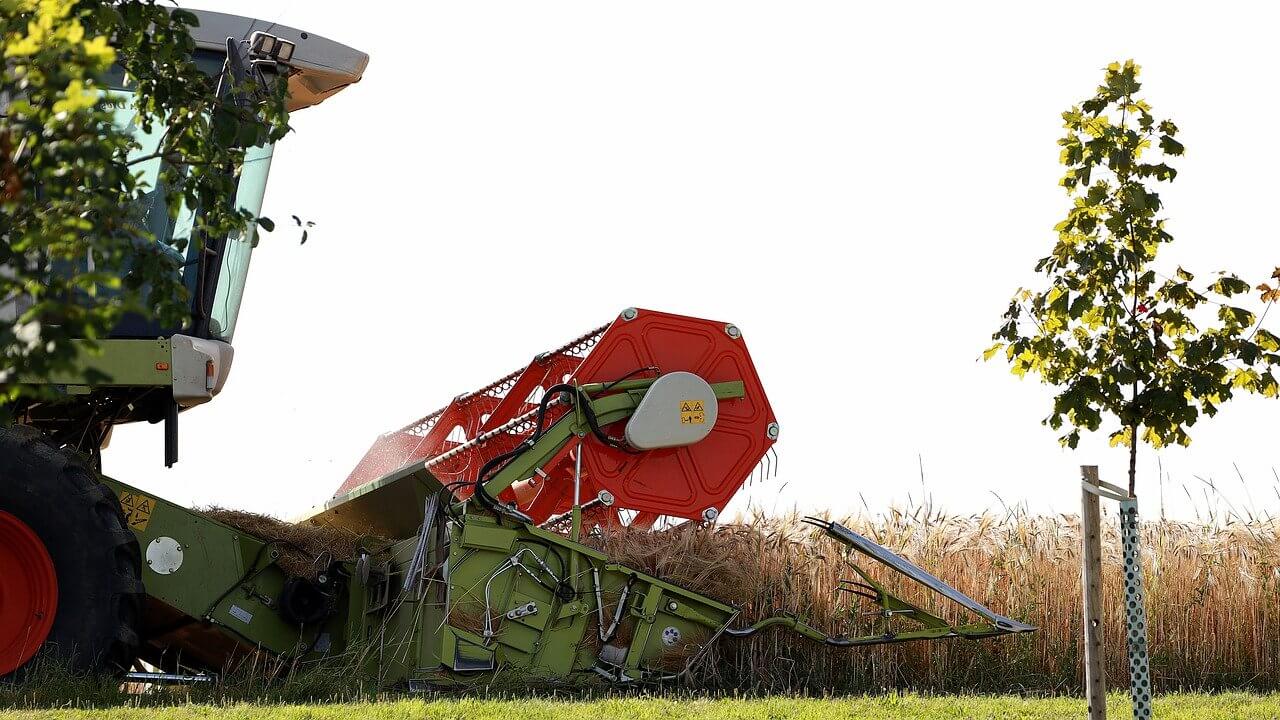One of the most essential machines on a larger farm is a combine harvester. It is that used for harvesting many different types of crops in large quantities. Read on to learn more about harvesting with a combine.
What You'll Learn Today
Why Is This Machine Called A “Combine”
The name, combine, is a reference to the fact that this machine combines four different harvesting operations. A combine can:
- Reap or cut crops
- Thresh or separate grains from plants
- Gather or collect the grains together
- Winnow or blow air through the grain to separate chaff (waste)
…all in a single process.
Why is it valuable to combine these tasks?
By combining four separate processes in harvesting grains, farmers can reduce the cost of human labor along with overall costs, greatly improve efficiency and save a lot of time.
Additionally, use of a combine harvester typically increases the yield of a crop. This means the farmer will get more profit for each harvest.
What Does A Combine Do During A Harvest?

As materials flow through the combine, they are gathered and cut up by the combine header. After this, they are carried by the feeder throat up to and through the chain and flight elevator. Following this, the materials are fed through the thresher.
The thresher or threshing system is arguably the most important part of the process. There is a tangential threshing unit that is made up of the rotary threshing drum (cylinder) along with an adjustable concave. It’s important to understand that the cylinder must be adjusted continuously throughout the threshing process to work efficiently.
In the tangential threshing units, there is a narrow space which is bounded on both sides by rotating rasp bars connected to the cylinder. There’s also concave surface over which the materials being processed must pass.
The striking of the rasp bars and movement of other active elements of the system result in an efficient threshing process. The reason for this is that when the rasp bars move along the concave surface, the resultant friction facilitates the threshing process.
As the rotation function adjusts to accommodate the materials being processed, the grain is effectively separated from the chaff. After this, the mixture falls into the cleaning shoe. Here, more friction help separate the grain from the chaff.
The adjustable aspect of this system is extremely important because different types of grains have different sizes and textures of both stem and grain. The entire system must be able to adjust to accommodate these differences.
In the next step, the straw walkers take up the threshed out grains and any separated materials and carry them out of the threshing unit. Some part of this mixture may be sent back through for a second threshing.
Grains that have been completely cleaned will be conveyed by an auger or paddle elevator to be stored temporarily in the combine tank. After this, a flapping auger will discharge grain out of the tank and into a trailer to be processed or stored.
A combine that is correctly maintained and adjusted for the crop being processed can produce 90% efficient grain separation.
Of course, this is just a cursory overview of the function of a combine. There are many different types of combines and as farmers demands become more complex and diverse, more and more types will be developed to pinpoint specific agricultural needs. Each agricultural brand is always hard at work trying to improve upon their current designs.
How Many Different Crops Can Be Harvested With A Combine?

Among the crops that are harvested using a combine are:
- Flax (linseed)
- Corn (maize)
- Sunflowers
- Soybeans
- Sorghum
- Wheat
- Canola
- Barley
- Pulses
- Oats
- Rye
For successful harvest, the machine must be outfitted with a head that has been specifically designed for the harvest of that particular grain. Here is our article explaining differences between forage and combine harvesters.
How Many Acres Can A Combine Harvest In A Day

Combine performance is heavily dependent upon ambient conditions and the adjustment and maintenance of the machine.
In ideal weather conditions (hot and dry) it is possible for a properly adjusted, well-maintained modern combine to cover as many as two-hundred acres in a days’ work; however, it is more likely that a combine will be able to work around one-hundred-and-fifty acres daily.
How many acres can a combine harvest per hour?
Generally speaking, with a well-maintained and properly adjusted machine, good conditions on the ground and a long field that doesn’t require lots of turning and maneuvering, you should be able to cover about ten acres hourly at a speed of a little over eight miles per hour.
For a valuable collection of charts and economic information pertaining to combine use, see this interesting resource from Iowa State University.